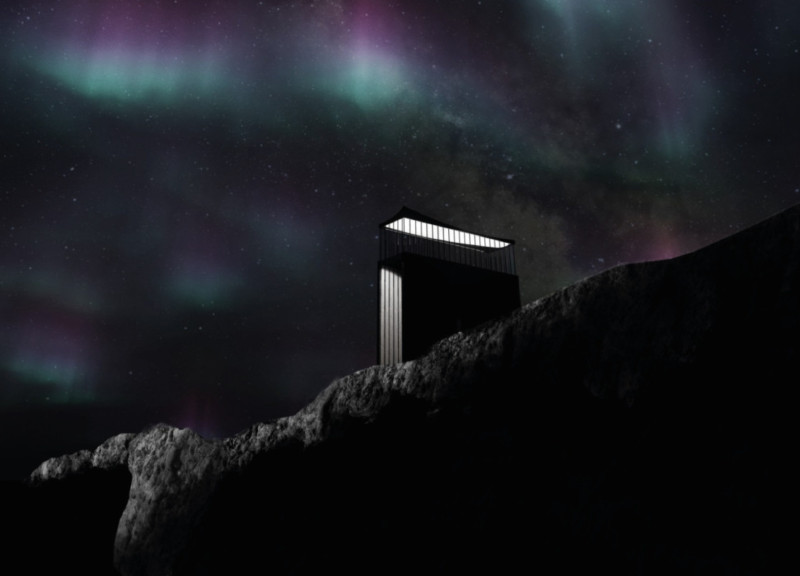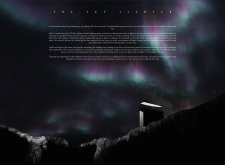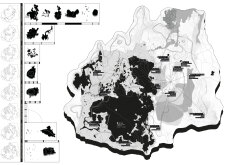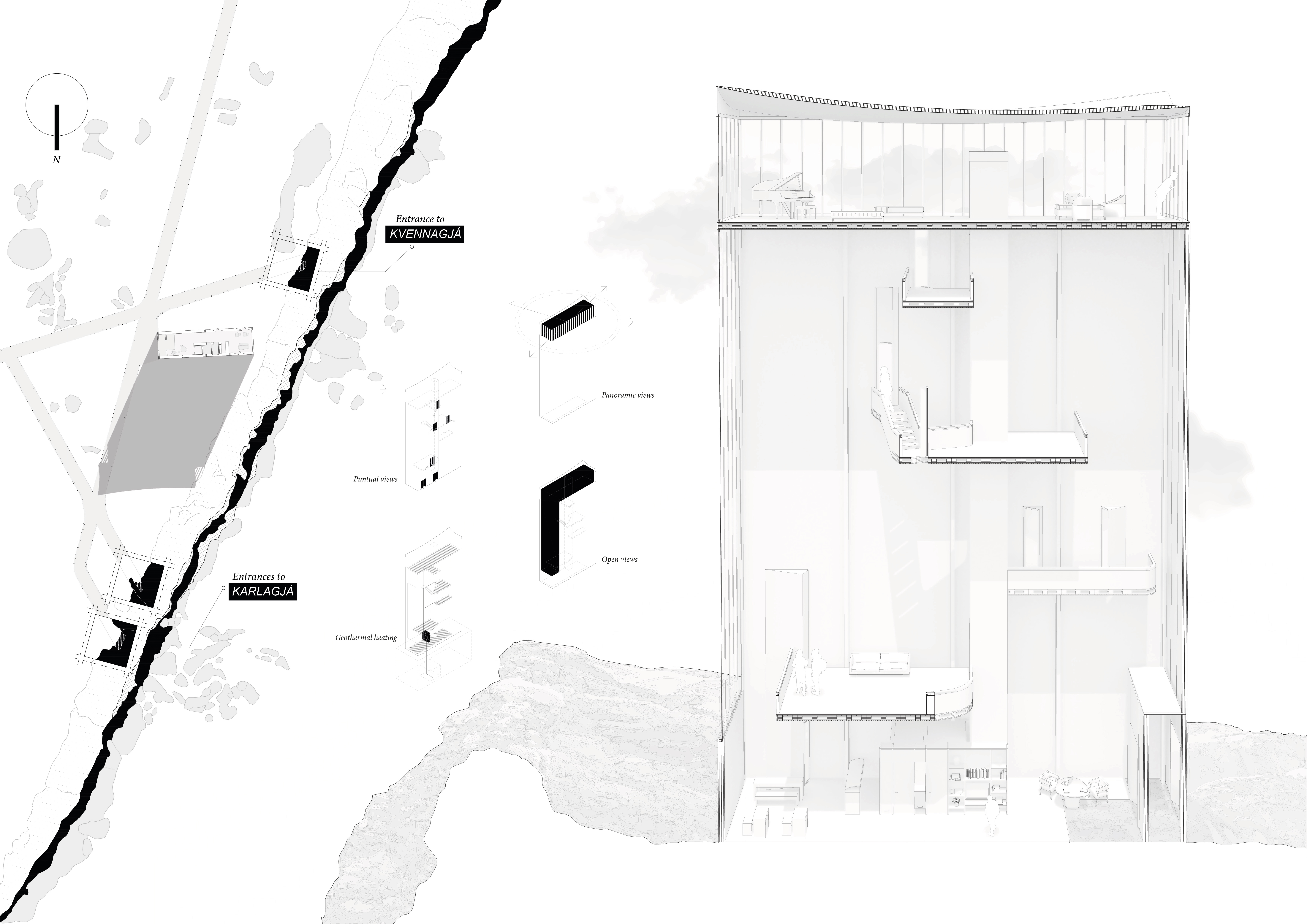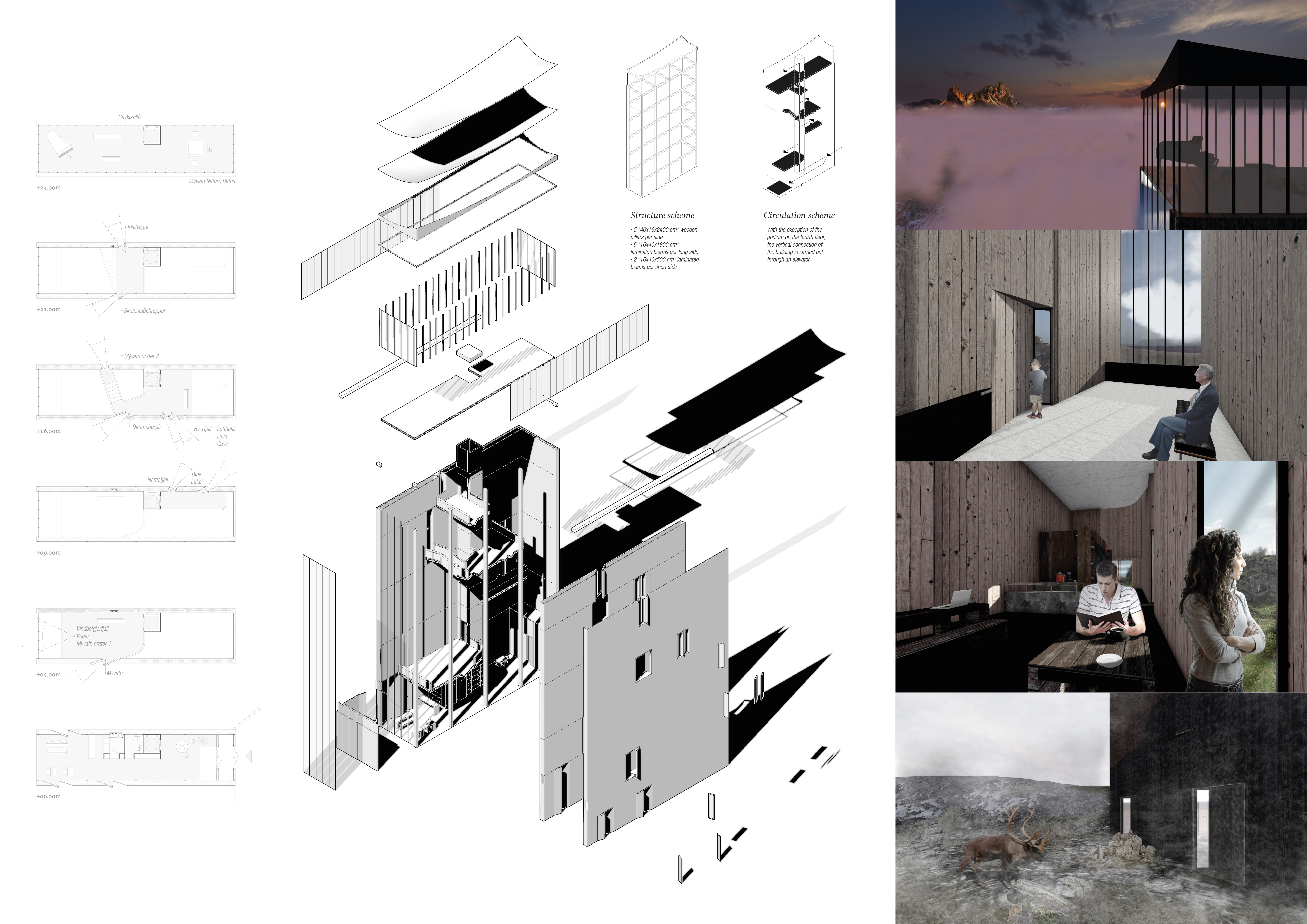5 key facts about this project
The Sky Lighter is an architectural work located at a significant intersection in Iceland, reflecting the resilient spirit captured by the saying *Þetta reddast*. This structure is intended to provide a vertical experience that connects visitors to the surrounding landscape while allowing for wide-ranging views. The design aims to be both functional and visually coherent, creating a landmark that stands out within its natural environment.
Design Concept
The concept centers on a vertical journey that concludes in a viewing platform, giving visitors a unique perspective of various landscape elements. The building has a dual form; it appears slender from the front and more robust from the side, adding visual interest in relation to the landscape. The height of the structure enhances its visibility in different weather conditions, allowing it to become a prominent feature against the broad Icelandic sky.
Integration and Accessibility
The design prioritizes accessibility by reconfiguring the pathways leading to the observation tower. These pathways blend with the landscape, helping visitors transition effortlessly. Parking is placed closer to the road, minimizing disruption to the surrounding area and ensuring a smoother experience for those arriving at the site.
Materiality and Aesthetics
The exterior of The Sky Lighter is clad with timber treated using the *yakisugi* method. This technique improves the wood's resistance to fire and water, extending its lifespan in a challenging climate. The darker surface of the wood contrasts with the snow-covered landscape, making the building easy to identify during winter months. The textured facade provides a unique visual element against the lighter colors of its surroundings.
Design Details
The building incorporates a curtain wall façade and perimeter-stained glass windows, which are designed to maximize natural light and create a welcoming interior. An organically shaped roof complements its overall form, echoing the natural features of the landscape. Each element of the design contributes to a cohesive relationship with the environment, resulting in a thoughtful expression of architecture that respects its setting.


